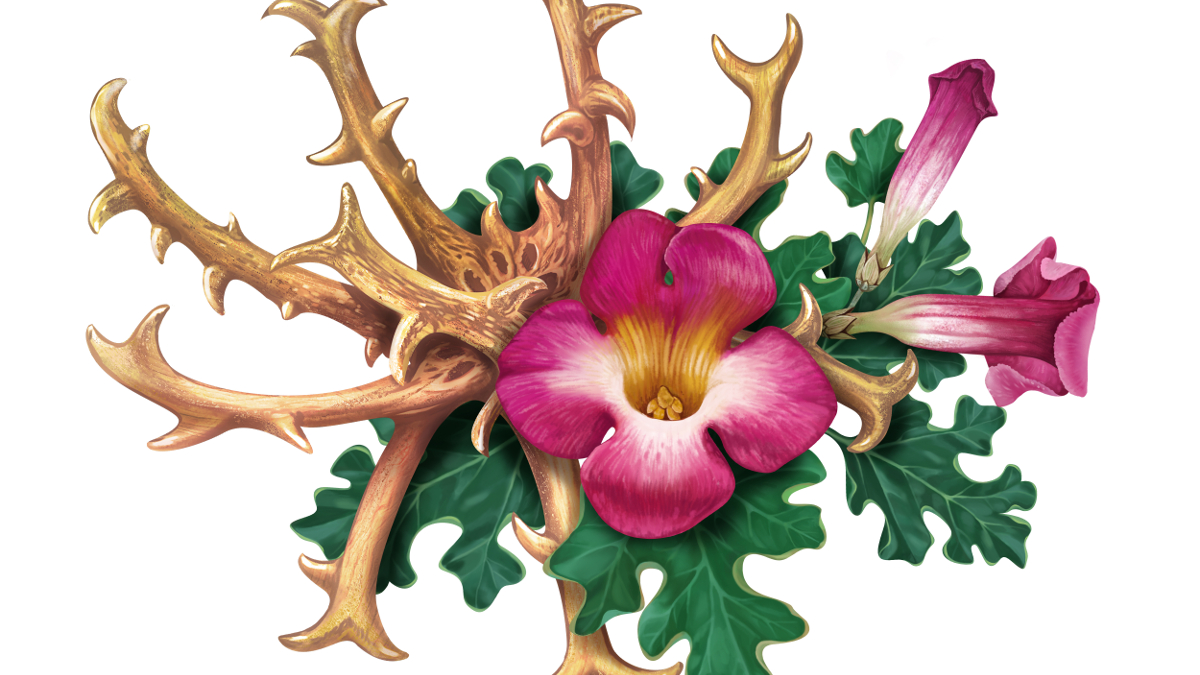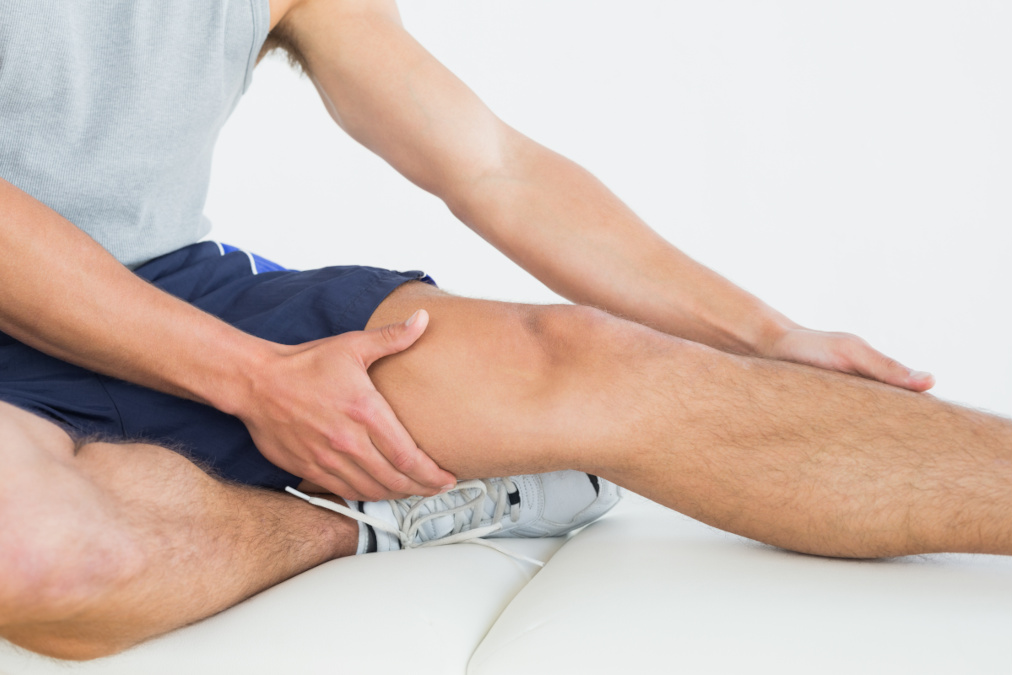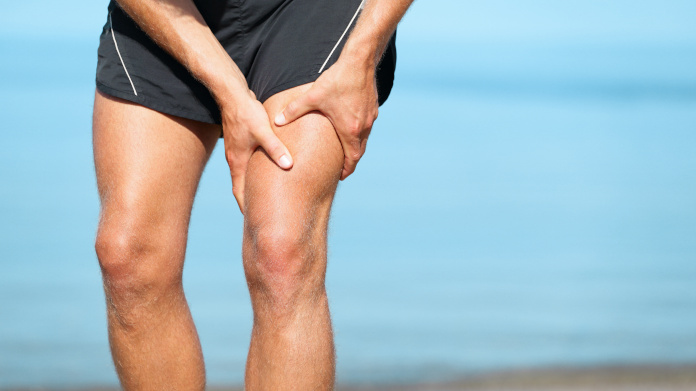
What exactly is Harpagophytum?
This somewhat complex-sounding plant is better known as ‘devil’s claw’ or ‘grapple plant’. Part of the Pedaliaceae or sesame family, Harpagophytum South Africa and Madagascar.
The proven benefits of the plant come from its deep roots which contain calcium, iron, copper, vitamin C, vitamin A, and potassium along with many other active ingredients.
A plant recognised for maintaining good joint health
First and foremost, several clinical trials have shown that Harpagophytum supports healthy joint function (1). Remarkably, a comparative study of 122 subjects suggests that devil’s claw is almost as effective as a drug used to treat osteoarthritis (diacerein) (2-3).
Similarly, a two-month UK trial of 259 patients found that taking Harpagophytum resulted in a significant reduction in joint discomfort (4). Indeed, ESCOP, (the European Scientific Cooperative on Phytotherapy) recommends taking devil’s claw to help maintain joint health and flexibility.
This plant is also believed to ease discomfort in the lower back (5-6).
Harpagophytum may help to stimulate both appetite… and the feeling of satiety
It has also been suggested that Harpagophytum helps to restore appetite… as well as increase the sensation of satiety. This may be due to its potential interaction with the hunger hormone (7).
One study showed that mice given powdered devil’s claw tended to eat less food than those given a placebo (8). Harpagophytum is thus sometimes used to support weight management and even to prevent obesity (9).
Devil’s claw may play a role in ensuring a healthy digestive system
Bid farewell to constipation, diarrhoea and flatulence! Clinical trials suggest that extracts of devil’s claw may significantly reduce - and even eliminate - digestive discomfort (10). It may thus help improve digestion and facilitate healthy elimination of waste products.
Harpagophytum may improve nutrient absorption in the gut, too. It is also traditionally used to help reduce cholesterol (11). Last but not least, devil’s claw may also have antioxidant properties, and may therefore contribute to delayed ageing of cells (12).
Some supplements formulated to support joint health
Is your quality of life adversely affected by joint or muscle pain? Are you keen to find effective, natural relief? Then try Super Harpagophytum. This natural dietary supplement will help to both maintain the health of your joints and combat oxidative stress.
In addition, you could combine it with Super Boswellia. This Boswellia serrata supplement, standardised to 20% AKBA (its most active ingredient), also plays an active part in maintaining joint health.
You can, of course, always opt for a joint-specific formulation such as Joint Support Formula, which combines chondroitin and marine-source glucosamine.
Note: there are, however, certain contraindications for this supplement. Those suffering from diabetes, high blood pressure, stomach ulcers or gallstones should not take Harpagophytum. The same applies to women who are pregnant or breastfeeding.
References
- Devil's Claw (Harpagophytum procumbens) as a treatment for osteoarthritis: a review of efficacy and safety. Brien S, Lewith GT, McGregor G. J AlternComplement Med. 2006 Dec;12(10):981-93. Review.
- Chantre P, Cappelaere A, et al. Efficacy and tolerance of Harpagophytum procumbens versus diacerhein in treatment of osteoarthritis. Phytomedicine. 2000 Jun,7
- Efficacy and Tolerance of Harpagophytum Procumbens Versus Diacerhein in Treatment of Osteoarthritis, P Chantre 1, A Cappelaere, D Leblan, D Guedon, J Vandermander, B Fournie, 2000 Jun 7
- Effectiveness and safety of Devil's Claw tablets in patients with general rheumatic disorders Mary Warnock Douglas McBean Andreas Suter Jen Tan Patricia Whittaker 20 September 2007
- https://www.lombalgie.fr/comprendre/quelques-chiffres/
- Chrubasik S, Junck H, et al. Effectiveness of Harpagophytum extract WS 1531 in the treatment of exacerbation of low back pain: a randomized, placebo-controlled, double-blind study.Eur J Anaesthesiol 1999 Feb,16
- Devil's Claw to Suppress Appetite—Ghrelin Receptor Modulation Potential of a Harpagophytum procumbens Root Extract, Cristina Torres-Fuentes, Wessel F. Theeuwes, Michael K. McMullen, Anna K. McMullen, Timothy G. Dinan, John F. Cryan, and Harriët Schellekens, 2014 Jul 28.
- The Role of Leptin and Ghrelin in the Regulation of Food Intake and Body Weight in Humans: A Review, M D Klok, S Jakobsdottir, M L Drent, 2007 Jan,8
- Devil's Claw to Suppress Appetite—Ghrelin Receptor Modulation Potential of a Harpagophytum procumbens Root Extract, Cristina Torres-Fuentes, Wessel F. Theeuwes, Michael K. McMullen , Anna K. McMullen, Timothy G. Dinan , John F. Cryan, and Harriët Schellekens, 2014 Jul 28.
- European Scientific Cooperative on Phytotherapy (Ed). Harpagophyti radix, ESCOP Monographs on the Medicinal Uses of Plants Drugs, Centre for Complementary Health Studies, Université d'Exeter, Grande-Bretagne, 1996.
- Sécurité des patients et protection des plantes médicinales : lignes directrices destinées à une industrie qui vaut 60 milliards de dollars, 10 FÉVRIER 2004
- Antioxidant Activity and Bioactive Constituents of the Aerial Parts of Harpagophytum Procumbens Plants, 15 Apr 2014
2 Days
Great service
Great service items dispatched straight away and arrived on time
M***** G***
6 Days
A good webshop for supplements
A good webshop for supplements, it has a large selection of them and considering the quality, the pricing offers good value for money. The ordering process is easy and the products are sent straight away.
Maurice
7 Days
Great quality
Products are of great quality and fast delivered.
Fred Laan
9 Days
SuperSmart destaca por la calidad de…
SuperSmart destaca por la calidad de sus productos.
GONZALEZ PALACIN Luis
9 Days
snelle levering,perfect product.
snelle levering,perfect product.
robert
10 Days
Been a customer for over 15 years and…
Been a customer for over 15 years and find their products along with the service excellent. I recommend Super Smart to all my friends.
Del Chandler
10 Days
Excellent product and service
The product was excellent and so were the delivery and the service
F. Ferlitz
13 Days
Never an issue ordering
Never an issue ordering. Simple and to the point. And product always comes the following day. Quality is great too!
Andrea
14 Days
Excellente service & products with rare…
Excellente service & products with rare revelation supplements I love ❤️
Giovanna Escalera
15 Days
Fast shipping
Fast shipping, products as ordered!
Coindozer
15 Days
The item arrived on time and is what…
The item arrived on time and is what was stated in the order.
HARDY Chris
18 Days
Very good products
Very good products. Very reliable. Quick delivery.
MIFSUD Joseph
22 Days
Fast shipping
Fast shipping, good products (just shipping costs to my country are extremely high).
Tanja Matko
22 Days
Many thanks.
Many thanks.
Alan
23 Days
Quick delivery and good product
Quick delivery and good product
cl



